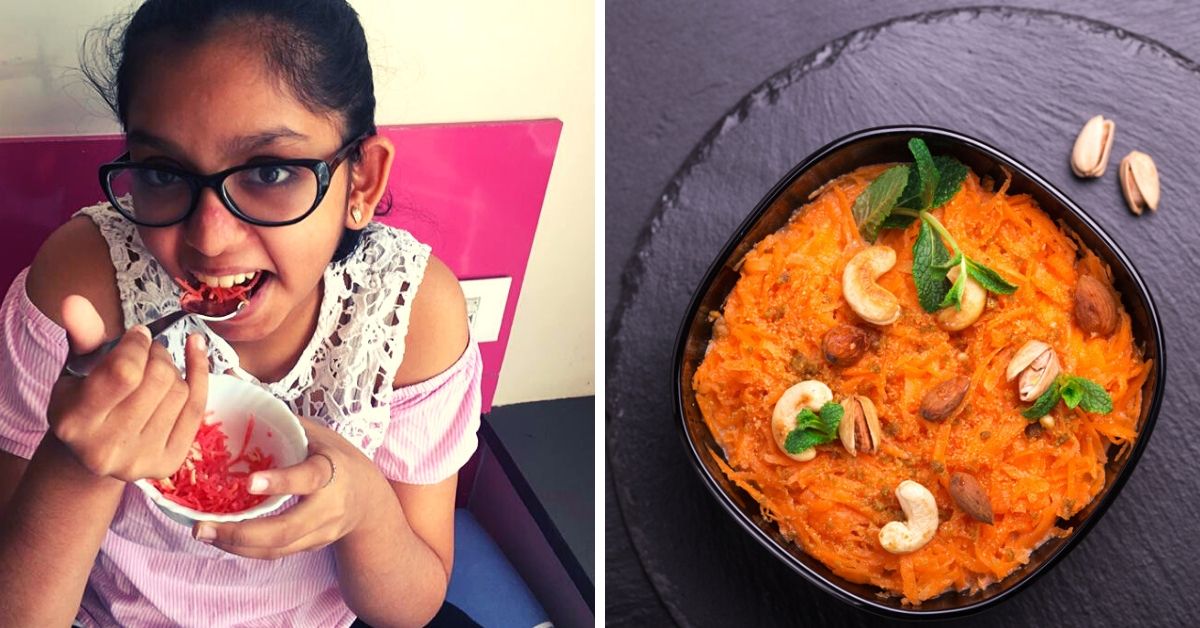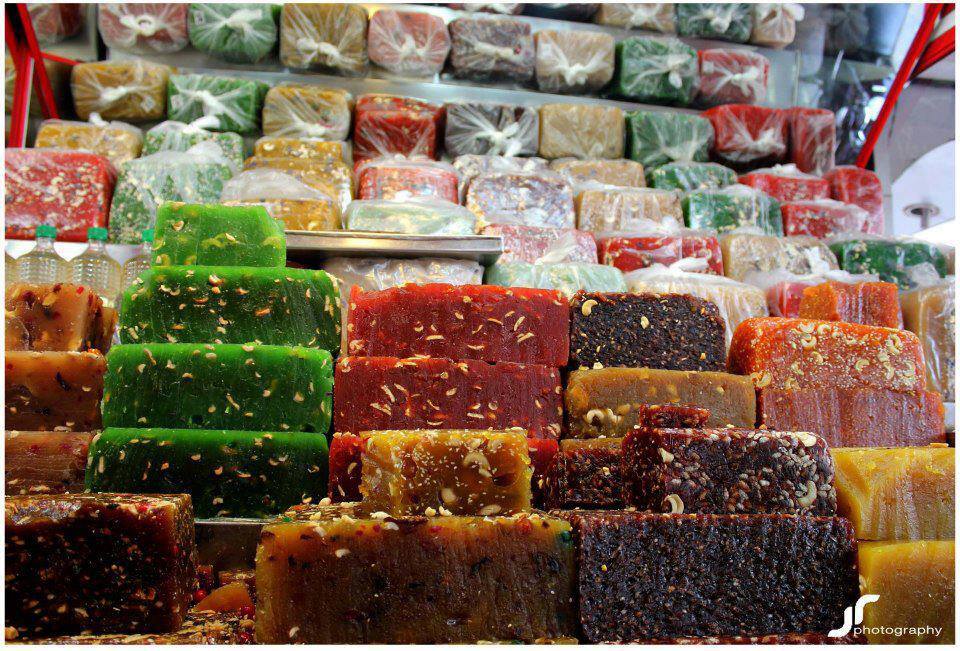Handfuls of History: How Halwa Became Our Favourite Desi Dessert
The word halwa is derived from the Arabic word ‘Hulw’, which means sweet and its first known recipe appeared in the 13th century in Middle-East

Gajar ka halwa, suji ka halwa, lauki halwa, badam halwa, moong-dal halwa, jouzi halwa, pineapple halwa.
If you are going weak in the knees and are already thinking of ordering some piping hot halwa, then be advised; this tale will make you salivate!
Each desi household has a personal story to tell about this delicacy. No matter which part of India you belong to, halwa is the go-to dessert to satiate one’s sweet cravings.
For instance, whenever the mood takes her, my grandmother takes over the kitchen to prepare the bright orange gajar ka halwa or carrot halwa to replace cakes on occasions like birthdays and New Year!
I have happy memories of my cousins and I cutting halwa ‘cakes’ to ring in the New Year.
The aroma and taste of that halwa served hot with stories of how my grandmother learnt the recipe from her great-grandmother, is still etched in my memory.

So what is the deal with Halwa? Where did it originate? How did it make its way across the world in so many forms? And how did we make it our own?
Let’s find out.
Tracing the History of Halwa
The word halwa is derived from the Arabic word ‘Hulw’, which means sweet.
According to some legends, the method of cooking halwa originated during the Ottoman Empire (1520 to 1566). Back then Suleiman, the tenth and longest-reigning Sultan of the empire, maintained a separate kitchen only for sweet items and halwa was one of them. This sweet Turkish delight was prepared by the helvahâneli (confectioner) with three basic ingredients: starch, fat and sweetener.

Some say the grain and nut-based helva (as the Turkish called it) traces its history to Byzantine empire sometime before the 12th century CE. Food historians claim that the first known recipe of halwa appeared in the 13th century Arabic Kitab al-Tabikh (The Book of Dishes) written by Muḥammad ibn al-Ḥasan Ibn al-Karīm. The book mentions eight varieties of halwa recipes.
Among these recipes, the common factor is the way in which sugar is used—first dissolved in water, followed by heating and then converting it into tile-like stacks. Where ingredients like dates, and nuts are added for texture, cardamon, camphor, and rose water work as aromatics.
Meanwhile in Egypt, the ‘halawa’ is a truffle-shaped dish and is primarily prepared with ghee, flour, and sugar.

Another tidbit about halwa is from Ukraine. Nathan Radutzky, a jew from Kiev, prepared halvah in 1907 in a small garage and once it became popular, he migrated to Brooklyn, US, and set up a small factory known as Joyva. It is now the biggest company that makes halva in the country .
The ‘Sweet’ Arab Influence in India
In his book, ‘Guzishta Lucknow’, Abdul Halim Sharar, an author and historian from Lucknow, mentions that halwa came to India from the Arabic lands via Persia.
Meanwhile, Chicago-based food historian Colleen Taylor Sen says in her book ‘Feasts and Fasts’ that halwa arrived in Delhi Sultanate between the 13th and 16th century during the rule of Mohammad Bin Tughlaq.
Furthermore, two of the earliest cities to have Arab influence were Karachi and Kozhikode (both coastal towns). No prices for guessing why halwa forms such an integral part of food traditions in these cities.

Interestingly, Kozhikode even has an area named ‘S M Street or Sweet Meat street’ named after its halwa shops.
The Karachi halwa (also known as Bombay Halwa) is quite different than the grainy halwa we are familiar with. This one is prepared using cornflour, sugar and water.

Another interesting tale is of halwa resides in the city of foodies, Hyderabad.

The famous Jouzi halwa sold at the century-old Hameedi Confectioners near Mozamjahi market has Turkish connections. The shop was set up by 11-year-old Mohammad Hussain with Turkish ancestry. His father was a soldier in the Nizam’s army who passed away when Hussain was barely two. With his father’s pension, Hussain and his grandfather set up a small sweet shop.
Hussain’s grandfather introduced the mouth-watering Jouzi halwa in India and the shop today appears in every tourist’s must-visit place.

Like Jouzi, there are 20 different types of halwas prepared across India, right from khus khus halwa, aate ka halwa, dates halwa, aloo ka halwa, pumpkin halwa, suji ka halwa to chana dal halwa and many more.
India experimented with varied ingredients and made halwa its own.
For instance, in Pune, halwa is made with green chillies, milk powder and cream and its christened as ‘Hari Mirch Halwa’.

Meanwhile, in West Bengal, the cholar dal halwa is made with gram dal and ghee with a touch of Tej Patta (bay leaf) and garam masala.
Anda halwa in Uttar Pradesh, Karnataka’s Kashi halwa prepared with melon or ash gourd and rice-based Karutha Haluwa in Kerala are some popular versions.
Being a person who has no sweet-tooth (yes, our tribe does exist), the fascinating history of the lip-smacking delight, the recipes I came across during the research and the pictures I saw, surely makes me want to gorge down handfuls of halwa!
Also Read: Food Secrets: 20 Delectable Indian Sweets You Probably Haven’t Heard Of, But Must Try Right Away!
(Edited by Saiqua Sultan)
Like this story? Or have something to share?
Write to us: [email protected]
Connect with us on Facebook and Twitter
hal
If you found our stories insightful, informative, or even just enjoyable, we invite you to consider making a voluntary payment to support the work we do at The Better India. Your contribution helps us continue producing quality content that educates, inspires, and drives positive change.
Choose one of the payment options below for your contribution-
By paying for the stories you value, you directly contribute to sustaining our efforts focused on making a difference in the world. Together, let’s ensure that impactful stories continue to be told and shared, enriching lives and communities alike.
Thank you for your support. Here are some frequently asked questions you might find helpful to know why you are contributing?


This story made me
-
97
-
121
-
89
-
167











